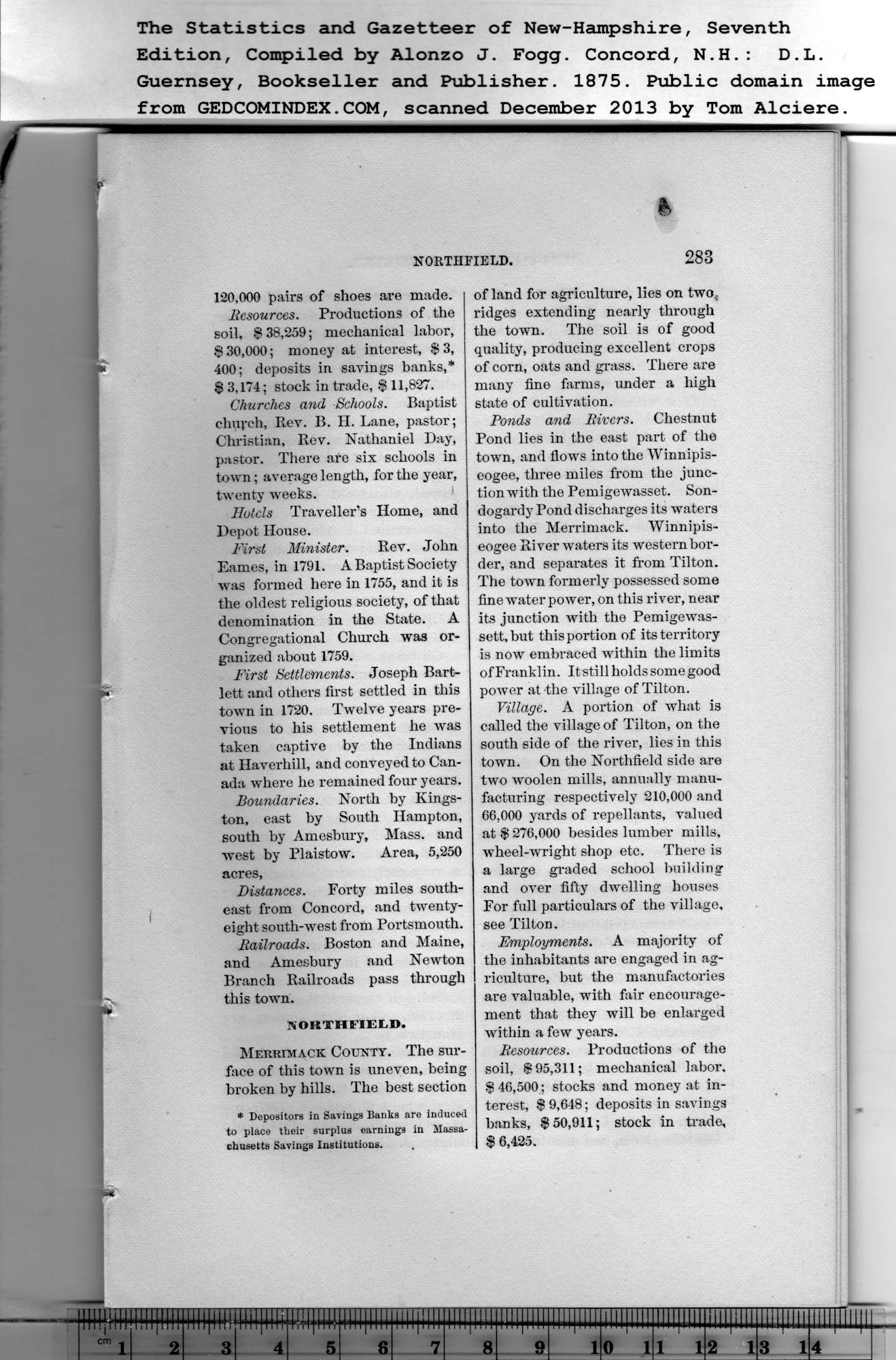|
120,000 pairs of shoes are made.
jResources. Productions of the
soil, $ 38,259; mechanical labor,
$ 30,000; money at interest, $ 3,
400; deposits in savings banks,*
$ 3,174; stock in trade, $ 11,827.
Churches and Schools. Baptist
church, Rev. B. H. Lane, pastor;
Christian, Rev. Nathaniel Day,
pastor. There are six schools in
town; average length, for the year,
twenty weeks.
Hotels Traveller’s Home, and
Depot House.
First Minister. Rev. John
Eames, in 1791. A Baptist Society
was formed here in 1755, and it is
the oldest religious society, of that
denomination in the State. A
Congregational Church was or-
ganized about 1759.
First Settlements. Joseph Bart-
lett and others first settled in this
town in 1720. Twelve years pre-
vious to his settlement he was
taken captive by the Indians
at Haverhill, and conveyed to Can-
ada where he remained four years.
Boundaries. North by Kings-
ton, east by South Hampton,
south by Amesbury, Mass. and
west by Plaistow. Area, 5,250
acres,
Distances. Forty miles south-
east from Concord, and twenty-
eight south-west from Portsmouth.
Railroads. Boston and Maine,
and Amesbury and Newton
Branch Railroads pass through
this town.
NORTHFIELD.
Merrimack County. The sur-
face of this town is uneven, being
broken by hills. The best section
* Depositors in Savings Banks are induced
to place their surplus earnings in Massa-
chusetts Savings Institutions. |
of land for agriculture, lies on two<
ridges extending nearly through
the town. The soil is of good
quality, producing excellent crops
of corn, oats and grass. There are
many fine farms, under a high
state of cultivation.
Ponds and Rivers. Chestnut
Pond lies in the east part of the
town, and flows into the Winnipis-
eogee, three miles from the junc-
tion with the Pemigewasset. Son-
dogardy Pond discharges its waters
into the Merrimack. Winnipis-
eogee River waters its western bor-
der, and separates it from Tilton.
The town formerly possessed some
fine water power, on this river, near
its junction with the Pemigewas-
sett,but this portion of its territory
is now embraced within the limits
of Franklin. Itstill holds some good
power at the village of Tilton.
Village. A portion of what is
called the village of Tilton, on the
south side of the river, lies in this
town. On the Northfield side are
two woolen mills, annually manu-
facturing respectively 210,000 and
66,000 yards of repellants, valued
at $ 276,000 besides lumber mills,
wheel-wright shop etc. There is
a large graded school building
and over fifty dwelling houses
For full particulars of the village,
see Tilton.
Employments. A majority of
the inhabitants are engaged in ag-
riculture, but the manufactories
are valuable, with fair encourage-
ment that they will be enlarged
within a few years.
Resources. Productions of the
soil, $95,311; mechanical labor.
$ 46,500; stocks and money at in-
terest, $ 9,648; deposits in savings
banks, $50,911; stock in trade,
$ 6,425. |
